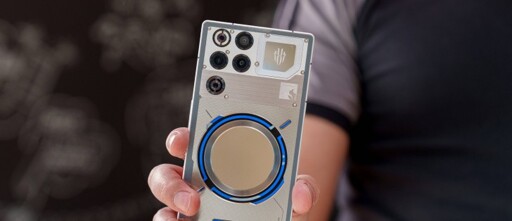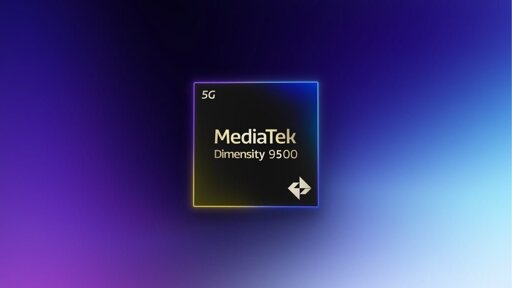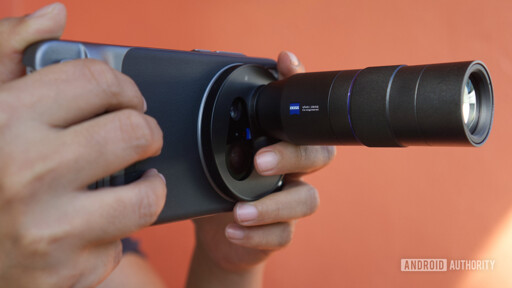It’s why I favored Unity over Gnome back in the day. The titlebar/basic menu items and close/minimize/expand buttons integrated into the top bar was better. Ya it was probably a copy of MacOS/OSX. Damn good to me in my opinion though. Overall I like Gnome but I’m not sold on it long term. Someday I may try going full time on KDE again. Very likely popos 26.04 with Cosmic I’ll try that out on my primary computer when it releases
- 30 Posts
- 44 Comments

 1·8 days ago
1·8 days agoI think it has the bands needed for AT&T but for T-Mobile it doesn’t have band 71, just the rest of the ones t-mobile uses

 3·9 days ago
3·9 days agoIt goes on sale for the US this week. Not buying it but sales start on there website tomorrow for the people that paid $1 earlier for $30 off. Wednesday open for everyone. Usually shows up on Amazon eventually. I just like seeing people run emulators on them

 2·10 days ago
2·10 days agoI’ve only purchased like 3 apps in like 15 years. Every now and then I donate to an open source project. I used to pay for Office, Adobe Cloud, Sony Vegas way back in the day. What happened was the free and open source became far beyond capable than my technical ability and if I needed pay software, it was for work at a company that purchased licenses themselves. It was fast forward in mobile apps. There was already 20 years of open source desktop software being adapted to mobile even if less limited it covered what I and many people would want to do with a mobile device was quickly covered.
Now it’s a matter of getting people to stumble on your software first and get them to pay before they learn of any of the truly free stuff. Cloud services where storage/processing is fully off your device and way better in ways are what can’t be fully replicated as a free service for people. A NAS can work out to be cheaper for storage but way less functional and more hassle for most people
I’ve regretted my Pixel 7 over an S22 for a couple years now. I bought into the Pixel hype and not needing a good SoC. Overheats worse than any phone I’ve ever had. Eventually Switch and PC gaming emulation took off which 8 Gen 2 phones can enjoy way better than a Tensor G2. Battery life is mediocre. I still had hope for the Pixel 10 with the TSMC fabbed chip. That was a bust too. Whenever I buy a phone, it’s not a Tensor phone. Snapdragon at the top of the list. Then Dimensity unless the next 2nm Samsung fabbed Exynos chips are good too. The AMD GPU is supposed to have pretty solid drivers
It may be that my standards for cameras on a phone keeps recalling back to like 2015 so cameras on any smartphone like $300+ is pretty good to me

 33·1 month ago
33·1 month agoI’ll hold off on a new phone to watch for this. Android could be great without Google’s nonsense. An OS that has high end hardware support and continues to work on convergence with desktop Linux both by the communities development and Google’s

 10·2 months ago
10·2 months agoTo me a temporary solution (which may be many years) where hardware support is real good on Android but terrible on Linux for these phones. In particular the high end chips. On Linux I rarely ever want to use an Android app. On Android it’d be cool to dock my phone and use Linux applications
I have an old laptop running it since a year ago. It’s getting there. If you use it long enough, you will still regularly stumble on little things that are nicer to use on gnome or kde but it’s getting there. I plan on switching my primary desktop to it for the 26.04 release

 312·3 months ago
312·3 months agoIt’s not a real replacement but if you want to support open source stuff, fossify apps including the launcher. Users and support will get it improving faster. On F-Droid and google Play store

 3·3 months ago
3·3 months agoTheir only chance there was the late 90s to early 2000s. MS is one company compared to the totality of mega corporations using Linux and MS also uses a lot of Linux. More money at play in the server market than the general desktop OS market. Linux is the server OS
The US government increasingly uses Linux. Other countries pick up Linux at a faster rate than the US. A higher percentage of people use MacOS today than 20 years ago

 19·3 months ago
19·3 months agoIf email tried to make it today rather than the 90s/early 2000s, that shit would have never been adopted by the big players. They’d all have come out with their own proprietary mail system. Google’s doing their take on embrace, extend, extinguish

 14·3 months ago
14·3 months agoScrew google. I’m buying phones that can run postmarketos or any normal Linux applications mobile OS. Need to grow the normal Linux phone market. Someday there’ll be a Steam Deck moment for mobile operating systems

 28·3 months ago
28·3 months agoGot to grassroots a more open platform over some decades like desktop Linux. Once a RISC-V phone comes out running some relatively normal Linux distro is out, I’ll buy it as a tinker with phone. At least it’ll be a portable battery powered device to run full desktop Linux when docked

 1·4 months ago
1·4 months agoHaven’t tried this yet. Tried Pluvia which this forks off months ago. I remember getting a game running. I think it was Eastward. Worked fine enough but decided to not spend anytime on it and wait until things got a lot better. Pretty sure others failed. I’ll try again eventually. Only care for installing games from Steam. Tried plain Winlator with a repack and that was too annoying to keep doing for any game

 9·4 months ago
9·4 months ago3 way tie between 3.5mm jack, easily removable, and now that microSD Express is finally becoming mainstream, a microSD Express card slot. It’d be nice to see in a flagship or at least a Mediatek mid range chip like the dimensity 8400

 11·4 months ago
11·4 months agoAll about someday that getting good enough to install Linux Steam, run big picture, and successfully install games from that and see what’s better, Winlator or Androids Linux VM

 20·5 months ago
20·5 months agoAny bit of user base growth helps get the ball rolling for future MS/USA missteps. Linux has just been getting better and easier year after year. It’s been a 30 year marathon ready for another 30+ years of development
I’m happy to use Flatpaks but the annoyances I’ve had are like when one application says to use you’ll need to point to the binary of another application that it depends on but very understandably doesn’t package together, figuring that out to me can be annoying so I’ll switch to a regular installation and it all just works together no fuss, no flatseal, no thinking about it really. Also some applications where it’s really nice to launch from the terminal especially with arguments or just like the current working directory and with Flatpaks instead of just right off the bat it’s application name and hit enter, Flatpak hope you remember the whole package name
org.wilson.spalding.runner.knife.ApplicationName …
Ya alias but got to remember to do that. So far anything I’d ever want to run from terminal, no Flatpak

 2·5 months ago
2·5 months agoMy bad if I took your words the wrong way. I gave my answer for why I prefer to use the primary application, because of funding, and your response to me sounded like dismissive condescension. You may not have meant condescension but it reads like dismissive condescension to me like I’ve heard plenty of whether in or out of the software industry or academia
















At least AMD/ATI and Nvidia came up when gaming was the core reason to buy a dedicated graphics card. They have the dev pipeline to at least still make good drivers for gaming. Chart makes me think - that’s why at least the proprietary drivers for Mali, PowerVR, Adreno, etc are all so mediocre when it comes to games. AMD great on Linux. Nvidia great just proprietary. Intel it was well regarded until they made Arc cards and people started comparing them to AMD/Nvidia and the Linux/Windows performance gap for Arc cards was very noticable. Qualcomm hyped up Linux support before the X Elite. Still mediocre.
The chart makes me think, the only hope for good drivers for gaming from non-AMD/Linux will be the open source Adreno driver. The 8 Elite and 8 Elite Gen 5 should be getting initial support early next year.
https://gitlab.freedesktop.org/mesa/mesa/-/merge_requests/38450
The rest, which company is going to put in money to do a driver fix for some video game with buggy rendering from like 2010 when they can be focusing on fixing any bugs brought up having to do with pytorch and whatever other stuff people use